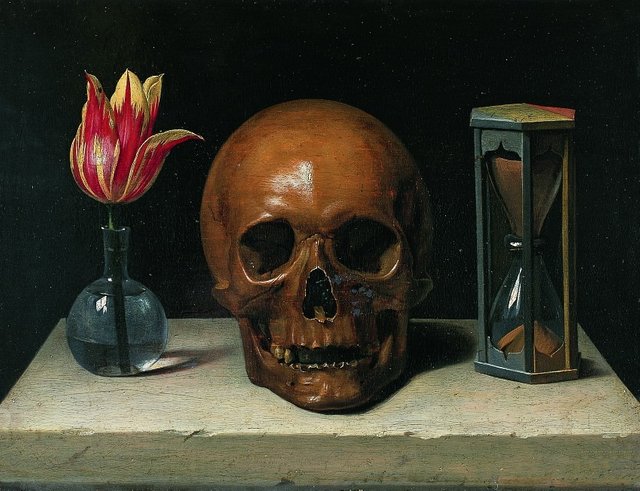Art Analysis Part. 2 - A Skull In The Night
Continued lack of inspiration. I'm instead browsing through pictures on www.wikiart.org and www.the-athenaeum.org. I can spend hours on end browsing through those sites. Maybe it's avoidance? Today a vanitas image from the baroque era caught my eye. One thing that fascinates me with the baroque era is that the characters who appear in art and literature all seem to take life seriously. There are no traces whatsoever of that postmodernist irony that I dislike so much. Something that I've noticed especially on my journeys in western Europe. But it's also beginning to be more and more present here in Ukraine. The music of the Baroque is amazing because it was taken seriously, the art was true because it was taken seriously.
I think that it may be due to the fact that death was perceived as an up-close reality much more than today. In the still life that was so popular among the rich, especially in Flanders and the Netherlands, both the affluence and the vanity symbols are present. It wasn't just the constant wars that ravaged Europe, which meant that death was so noticeable. Even the most peaceful city life was fatal in a completely different way than today. When every little flu and every sip of water could mean that life suddenly ended, it was as if you took the life you had more seriously. This is of course just speculations, but much suggests that suicide was rarer then compared to now. It's as though life needs struggle and contrast to feel meaningful. I'm not saying that we need complete misery in order to experience the joy of life, but the postmodern era where nothing is serious and everything is fluid is probably contributing to the suicide statistics of today. Those who know that life is short and death eternal seem to realize the seriousness of life and make the most of it.
Short about the artist:
Philippe de Champaigne (1602-1672) was a French artist born in Flanders. Champaigne arrived in Paris from his birthplace of Brussels in 1621, where he worked for Georges Lallemand for a while and made acquaintance with one of my favorite painters of the time, Nicolas Poussins. The influence of the latter is evident in Champaigne's early production. Initially, he worked primarily as a decorator, but in 1628 he became a court painter, and came with the time to become one of the most engaged portraits in France. The painting with the skull is called Vanité (1644) and can be found in Musée de Tessé, Le Mans.

